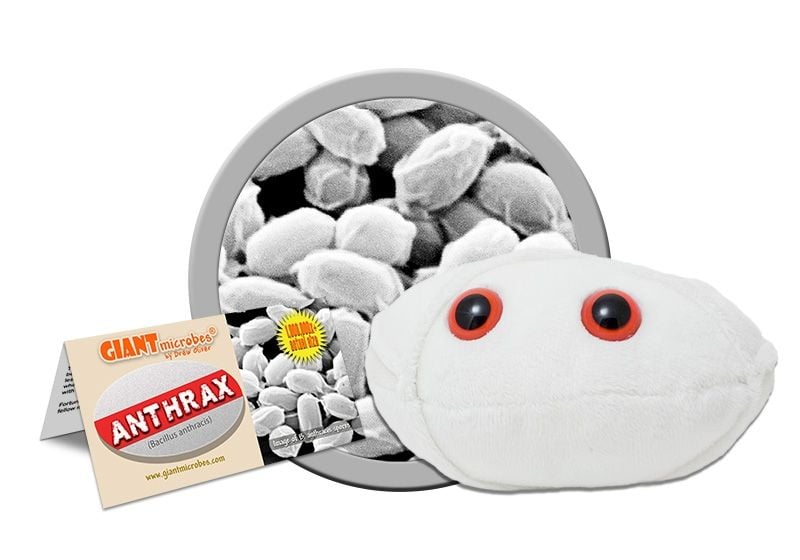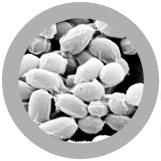Anthrax (Bacillus anthracis)
Product Details
Additional Information
| Sizes | Giantmicrobes are based on actual microbes, cells, organisms and other critters, only 1,000,000 times actual size! Gigantic (GG) 40-60cm XL (XL) 25-38cm Original (PD) 12-20cm Minis (MM) 5-10cm each Keychain (KC) 5-10cm with clip |
|---|---|
| Materials | Plush from all new materials. Stuffed with polyester fiber fill. Surface washable: sponge with water & soap, air dry. |
| Packaging | Each plush microbe includes a printed card with fun, educational and fascinating facts about the actual microbe or cell. |
| Safety | Every product meets or exceeds U.S. and European standards for safety. For ages 3 and up. |
All about Anthrax (Bacillus anthracis)
Though the word “anthrax” conjures up fearsome thoughts of biological weapons, anthrax is a once-common disease caused by the spore-forming bacterium Bacillus anthracis, which is often found in soil. It primarily afflicts grazing animals such as horses, goats, sheep, and cattle. Indeed, the fifth plague of the Bible (widespread death of livestock) may be a description of an anthrax outbreak – as well as the sixth plague, which describes the skin boils typically found after human exposure to infected animals or animal products.
Nearly all human anthrax infections are found on the skin. These infections are uncommon, rarely fatal, and more or less non-contagious. By contrast, gastrointestinal and inhalational anthrax infections – which result from ingesting or inhaling anthrax – can be deadly.
Because anthrax is non-contagious, can be deadly, and can form durable, long-lived spores, it has long been considered a prime candidate for weaponization. Fortunately, manufacture of large spore quantities is complicated and dangerous. In addition, high levels of exposure to anthrax spores are required to cause infection, and most wide-spread dispersion methods would significantly dilute spore concentration.
A limited quantity of anthrax vaccine is currently available to individuals with an elevated risk of infection (such as military personnel and veterinarians). In addition, experimental evidence suggests that immediate treatment with antibiotics can provide an effective response to anthrax exposure – and help ward off a modern outbreak of biblical proportions.
| Name | Anthrax comes from the Greek: Anthrax = coal because of the black and inflamed appearance of cutaneous anthrax. |
|---|
| Where It Lives | Because this disease primarily affects animals, people can get it from contact with diseased animals and consuming contaminated meat. Animals, and humans on rare occasions, get it from soil, plants and water. |
|---|
| Symptoms | Inhaling anthrax spores affects the lungs, and it is very frequently fatal. Eating contaminated meat affects the intestines, which has symptoms of diarrhea, vomiting, stomach pain and fever. Touching diseased animals or animal products affects the skin, and anthrax presents itself as boils or lesions with black centers. This skin infection, called cutaneous anthrax, is the most common and the least deadly form of the disease. |
|---|
| Cure | Treatment with antibiotics. Livestock in areas of high risk get vaccinations against anthrax. |
|---|
| History |
1875: Koch isolated Bacillus anthracis and verified that it caused the anthrax disease. Big Outbreaks: 1978: A huge Zimbabwe outbreak killed over 180 people and infected about 10,000 people. Recent Outbreaks: 2001: Anthrax infected letters were sent to American media offices and Senators soon after the 9/11 attack. This attack infected 22 people and ended up killing 5. |
|---|
| Fascinating Facts |
It is a very uncommon disease in the United States. Anthrax was used as biological warfare in WWI. Germans infected animals that they traded to the Allies. Anthrax has been considered for use as a weapon in multiple other wars. |
|---|






